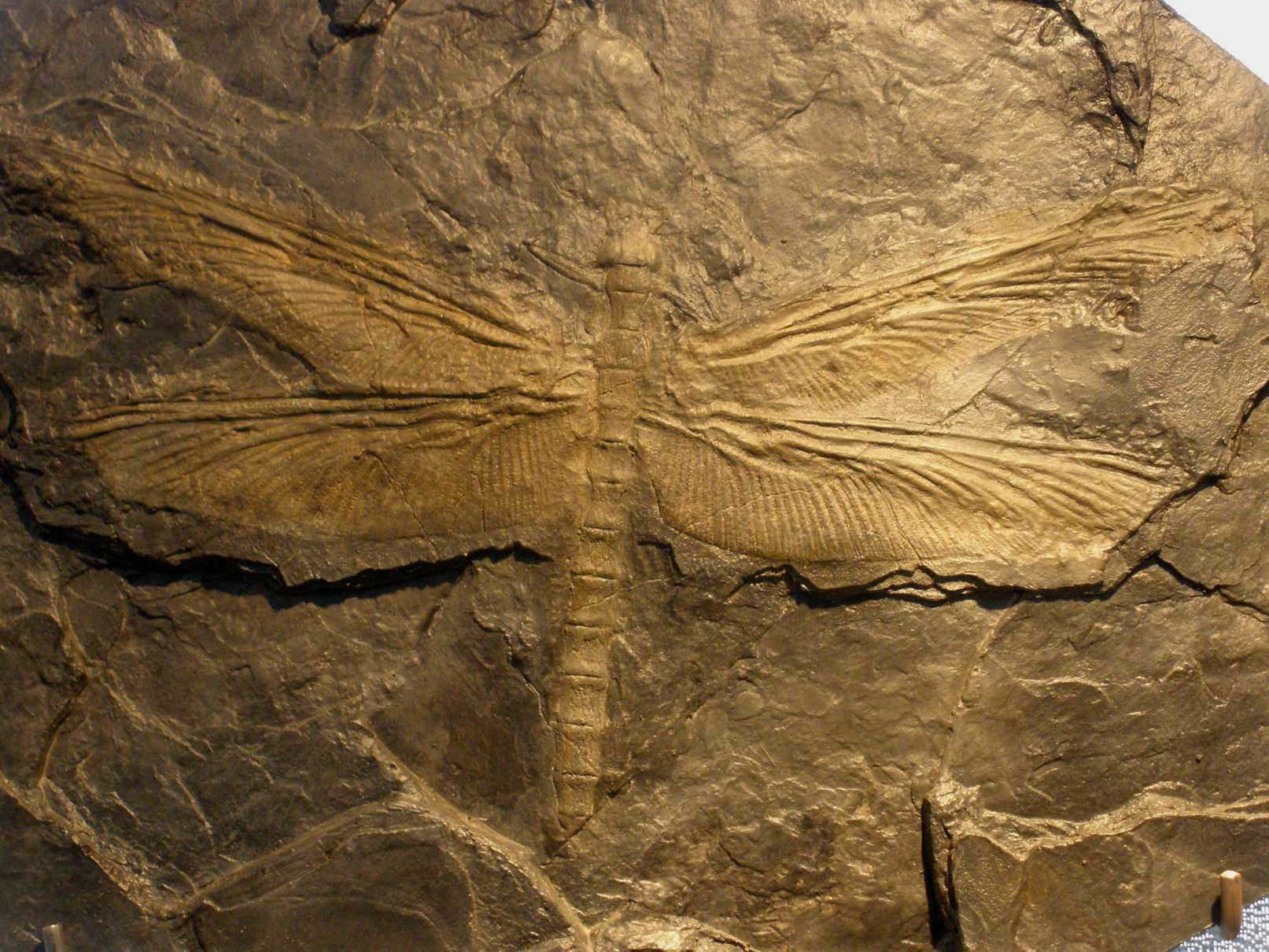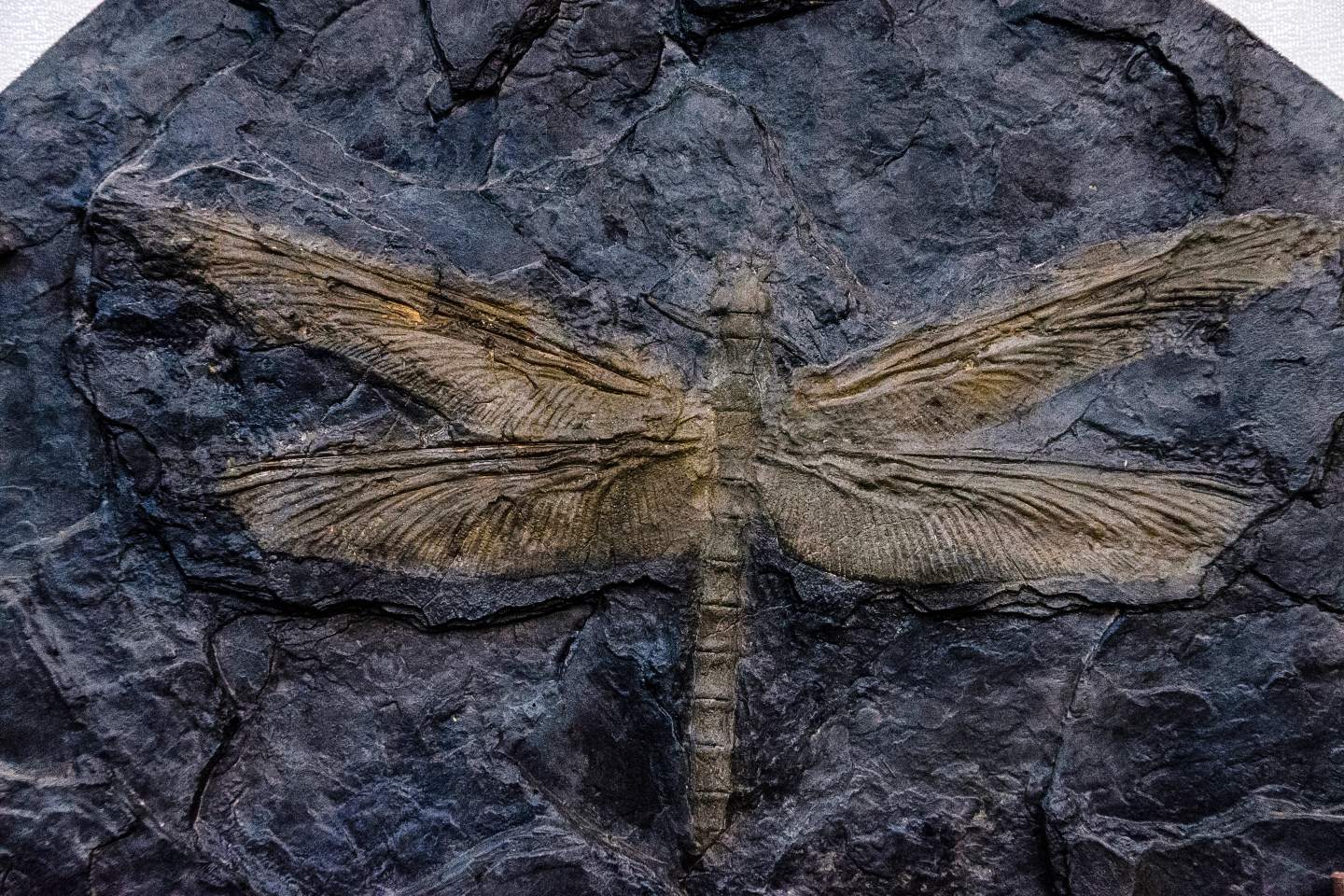During the late Permian era, approximately 275 million years ago, there existed a dragonfly called Meganeuropsis permiana, which holds the title of being the largest insect ever recorded. These dragonflies boasted an impressive wingspan of around 30 inches or 2.5 feet (75 cm) and weighed over 1 pound (450 g), equivalent to the size and weight of a crow.

Although popular textbooks often refer to “giant dragonflies” from the time before dinosaurs, this statement is only partially accurate as true dragonflies had not yet evolved at that time. Rather, the creatures in question were more primitive beings known as “griffin flies” or Meganisopterans. Unfortunately, the fossil records for these creatures are quite limited.
Meganisopterans thrived from the Late Carboniferous period to the Late Permian period, spanning roughly 317 to 247 million years ago. The first discovery of Meganeura fossils occurred in France in 1880, and in 1885, French Paleontologist Charles Brongniart described and named the specimens. Subsequently, in 1979, another remarkable fossil specimen was found in Bolsover, Derbyshire.
Meganisoptera, an extinct family of insects, consisted of large predatory creatures that superficially resembled today’s dragonflies and damselflies known as odonatans. Among these ancient insects, Meganeuropsis stood as the largest representative.
Debate has arisen regarding the ability of Carboniferous insects to attain such gargantuan sizes. The levels of oxygen and atmospheric density played a crucial role.

The process of oxygen diffusion through the tracheal breathing system of insects inherently limits their potential size; however, prehistoric insects seem to have surpassed this barrier. Initially, it was proposed that Meganeura could only fly due to the higher oxygen concentrations in the atmosphere at that time, surpassing the current 20%.
Furthermore, the absence of predators in the sky has been suggested as a factor contributing to the immense size of meganeurids compared to their modern relatives. Bechly proposed that the lack of aerial vertebrate predators allowed pterygote insects to evolve to their maximum sizes during the Carboniferous and Permian periods (Carboniferous Period, fifth interval of the Paleozoic Era, from the end of the Devonian Period 358.9 million years ago, to the beginning of the Permian Period, 298.9 million years ago).
This evolutionary “arms race” for increased body size may have been accelerated by the competition between plant-feeding Palaeodictyoptera and Meganisoptera, acting as their predators.
Lastly, an alternative theory implies that insects that underwent aquatic larval stages before transitioning into adults on land grew larger as a defense mechanism against the high levels of oxygen prevalent in water.
Meganeuropsis permiana became extinct at the end of the Permian period, about 252 million years ago. The extinction of Meganeuropsis permiana and other large insects is thought to have been caused by a combination of factors, including a decline in oxygen levels, climate change, and the arrival of the first birds.




